Pettico Wick to St Abbs Harbour
Geological Conservation Review site | GCR #2510 | Igneous Petrology | Old Red Sandstone Igneous
Geological Conservation Review site | GCR #2510 | Igneous Petrology | Old Red Sandstone Igneous
Scotland's geosites are chosen because of their local, national or international importance. Take only photos, leave only footprints: avoid causing any damage to this site. You can walk almost anywhere in Scotland without the need to ask permission or keep to paths, but you have a responsibility to care for your own safety, to respect people's privacy and peace of mind and to cause no damage.
This site is partially a Site of Special Scientific Interest (SSSI). It is an offence to intentionally or recklessly damage the protected natural features of a SSSI, and this includes unauthorised sample collection.
The right of access does not extend to quarries, building sites or any land where public access is prohibited, or to the collection of geological samples.
St Abb’s Head on the dramatic Berwickshire coast has rugged andesitic lava hills interspersed with bedded tuffs which form lower ground. St Abbs village is sited on a volcanic neck of agglomerates, seen around the harbour and in Starney Bay where there is an igneous contact with Silurian greywackes.
The volcanic rocks of the St Abb's coast form a 330m thick pile of lavas, tuffs and agglomerates of Lower Devonian age. The lavas are olivine-orthopyroxene phyric basic andesites and are often autobrecciated. A sequence of bedded tuffs, 27m thick, is well-exposed at Horsecastle Bay and provides an important marker horizon in the sequence. South of Craig Robin, agglomerates mark the site of a major volcanic vent. The St Abb's lavas show some geochemical affinities with those of the Cheviot, and both suites are distinct from the subduction-related lavas of the Old Red Sandstone continent farther to the north. This fact has important plate-tectonic implications and it is possible that the St Abb's Cheviot lavas may postdate the closure of the Iapetus Ocean.
There is a National Trust for Scotland car park 500m west of the village (free for NTS members) and several car parks at St Abbs harbour for which there is a charge. There is limited road parking in St Abbs. There are public toilets near the NTS car park and at the harbour. St Abbs Visitor Centre can be found on the road above the harbour.
https://earthwise.bgs.ac.uk/index.php/St._Abb%27s_Head_-_an…
A detailed account by D.C. Greig can be found in ‘ Scottish Borders Geology – an excursion guide’ edited by A.D. McAdam, E.N.K. Clarkson, P. Stone. 1972
https://sitelink.nature.scot/site/9870
Pettico Wick to St Abbs Harbour NatureScot
https://edinburghgeolsoc.org/downloads/lbgc-leaflet-st-abbs…
An information leaflet for the general public is available from the Edinburgh Geological Society.
Visit St Abb’s Head at your own risk. The sea cliffs are steep and rock and grassy slopes may be hazardous in wet and wintry conditions. The rocks in Starney Bay and St Abbs harbour are best seen at low tide.
There are no site highlights yet.
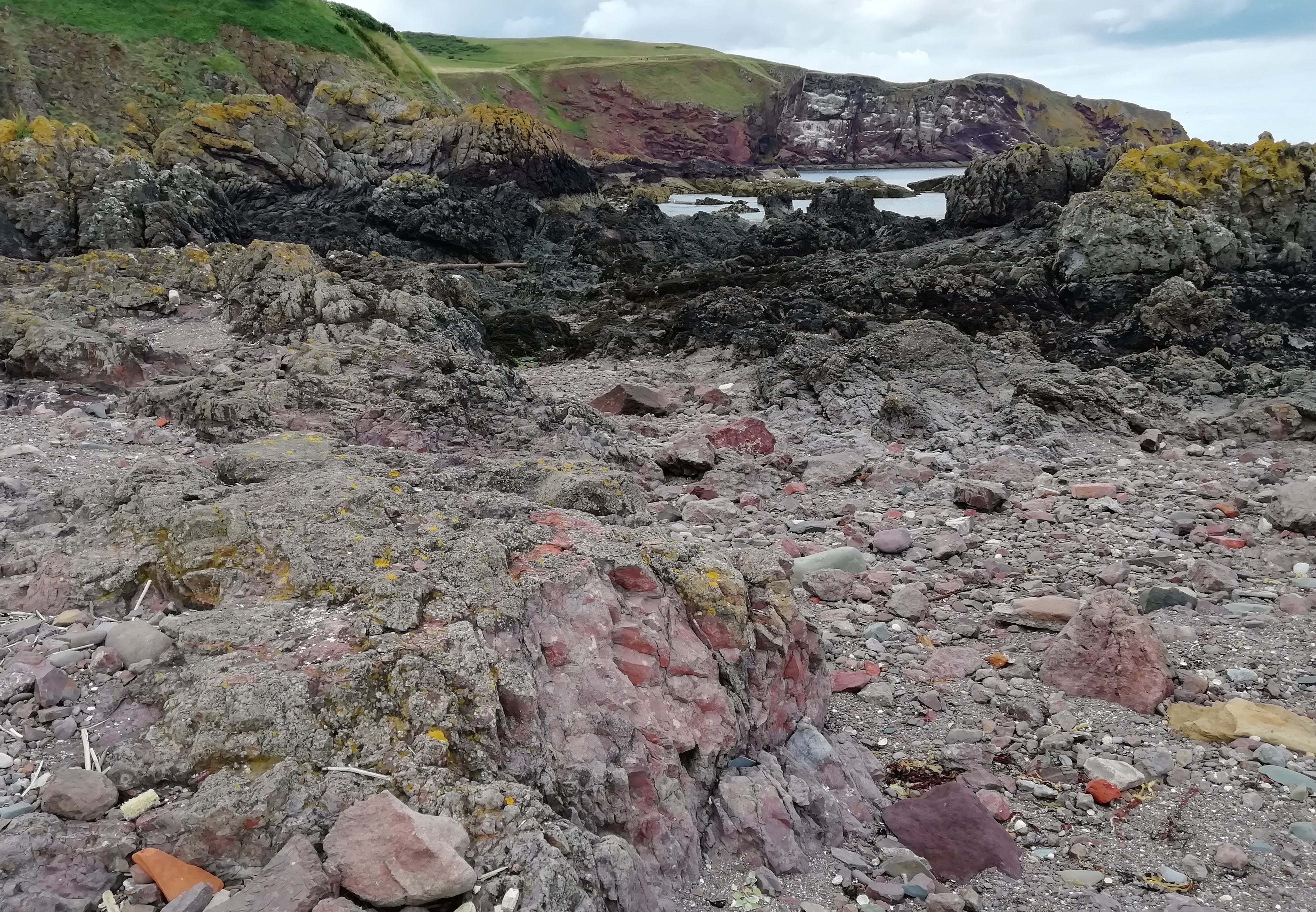
From the north end of St Abbs harbour at NT 91911 67402, by the car park, the cliffs of White Heugh, where nesting birds use ledges in the andesitic lavas, are visible. To the left of White Heugh is a gully following the St Abb’s Head Fault, which separates the lavas from the Old Red Sandstone red/orange conglomerates of Bell Hill. The agglomerates in the foreground are the fragmented rocks and solidified lavas of the pipe/neck of the St Abbs volcano, which underlies the village. July 2023
Alison Tymon
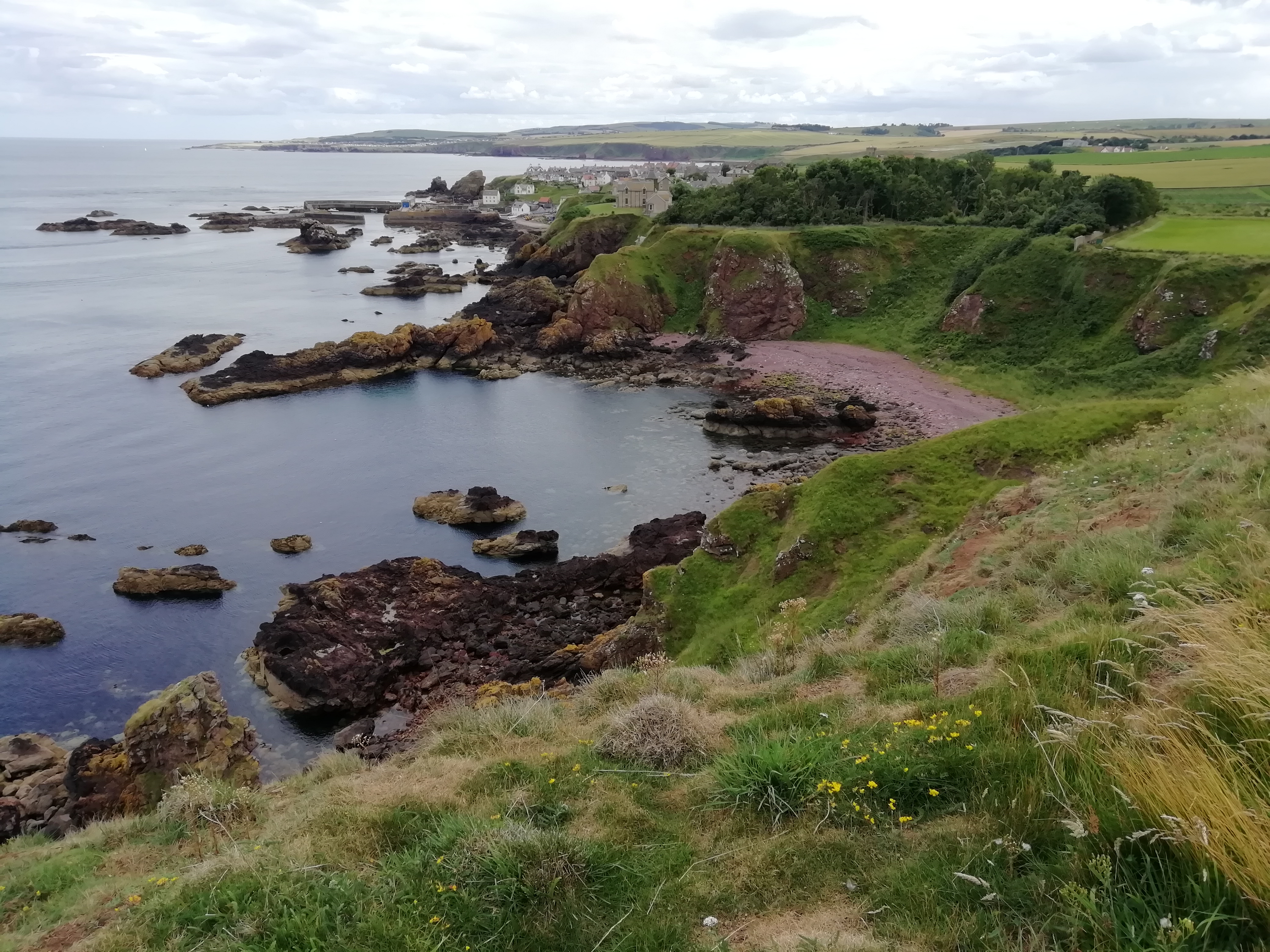
The view from Bell Hill at NT 91651 67872 shows St Abbs village, with Eyemouth in the distance. Orange conglomerates, the oldest rocks of the Old Red Sandstone, are seen in the foreground. They overlie Silurian greywackes, not visible in this view, which have been highly altered by the heat of the St Abbs volcano and are seen best in the pebbles at Starney Bay. The igneous contact between the St Abbs agglomerates and the greywackes runs close to the black crags below the cliff. July 2023
Alison Tymon
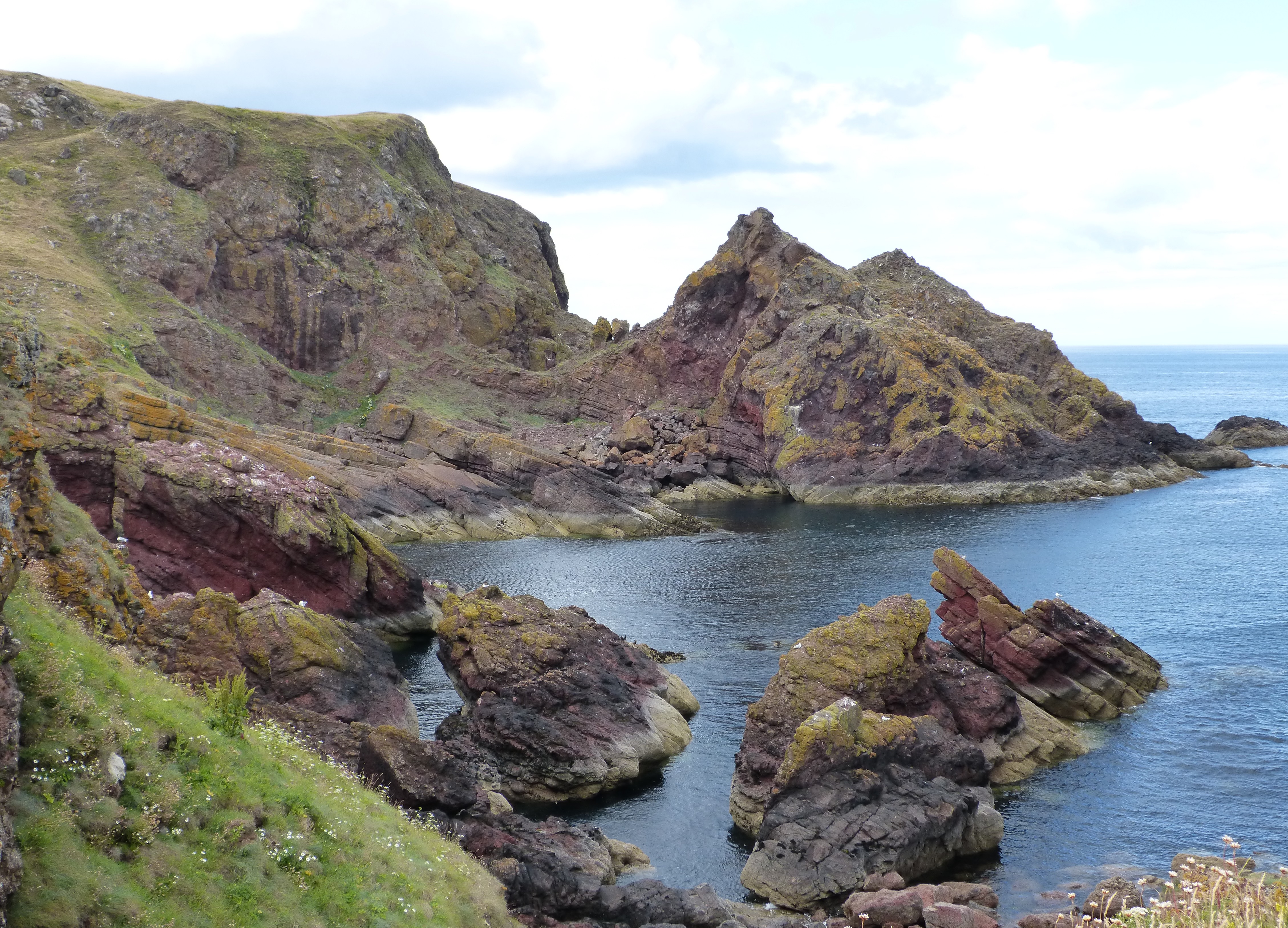
At Horsecastle Bay, seen here from NT 91904 68413 looking north-west, bedded tuffs – ash from eruptions – dip gently into the sea. Subsequently, andesitic lava flowed over the volcanic ash and can be seen in the upper part of the sea stack and the cliffs beyond. July 2023
Alison Tymon
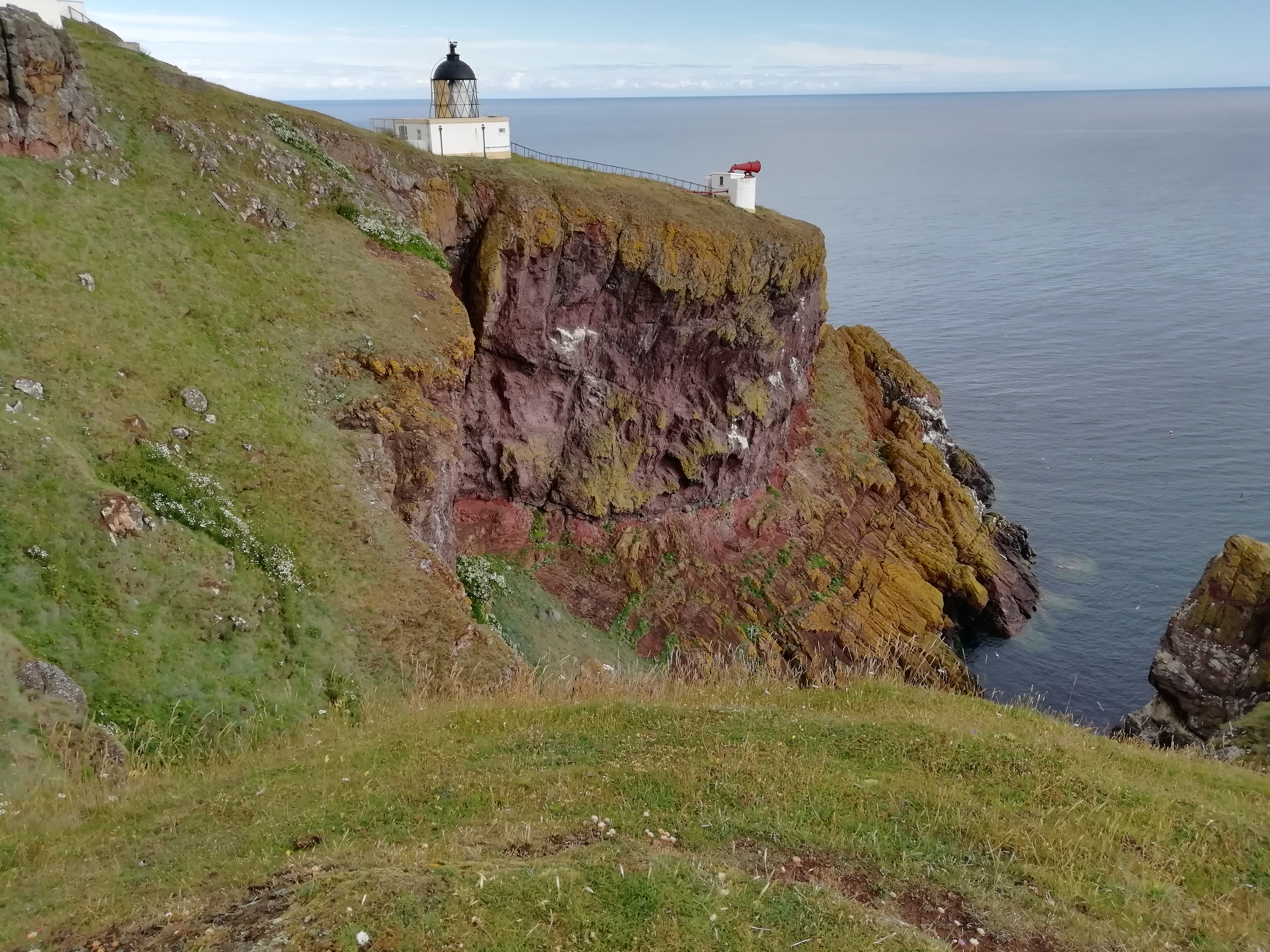
Two andesitic lava flows are exposed on the cliff underlying the St Abb’s Head lighthouse. Looking from NT 91451 69149, the igneous contact between them can be identified by the zone of reddening of the surface of the lower lava due to a period of weathering before the upper lava flowed from a later eruption. July 2023
Alison Tymon
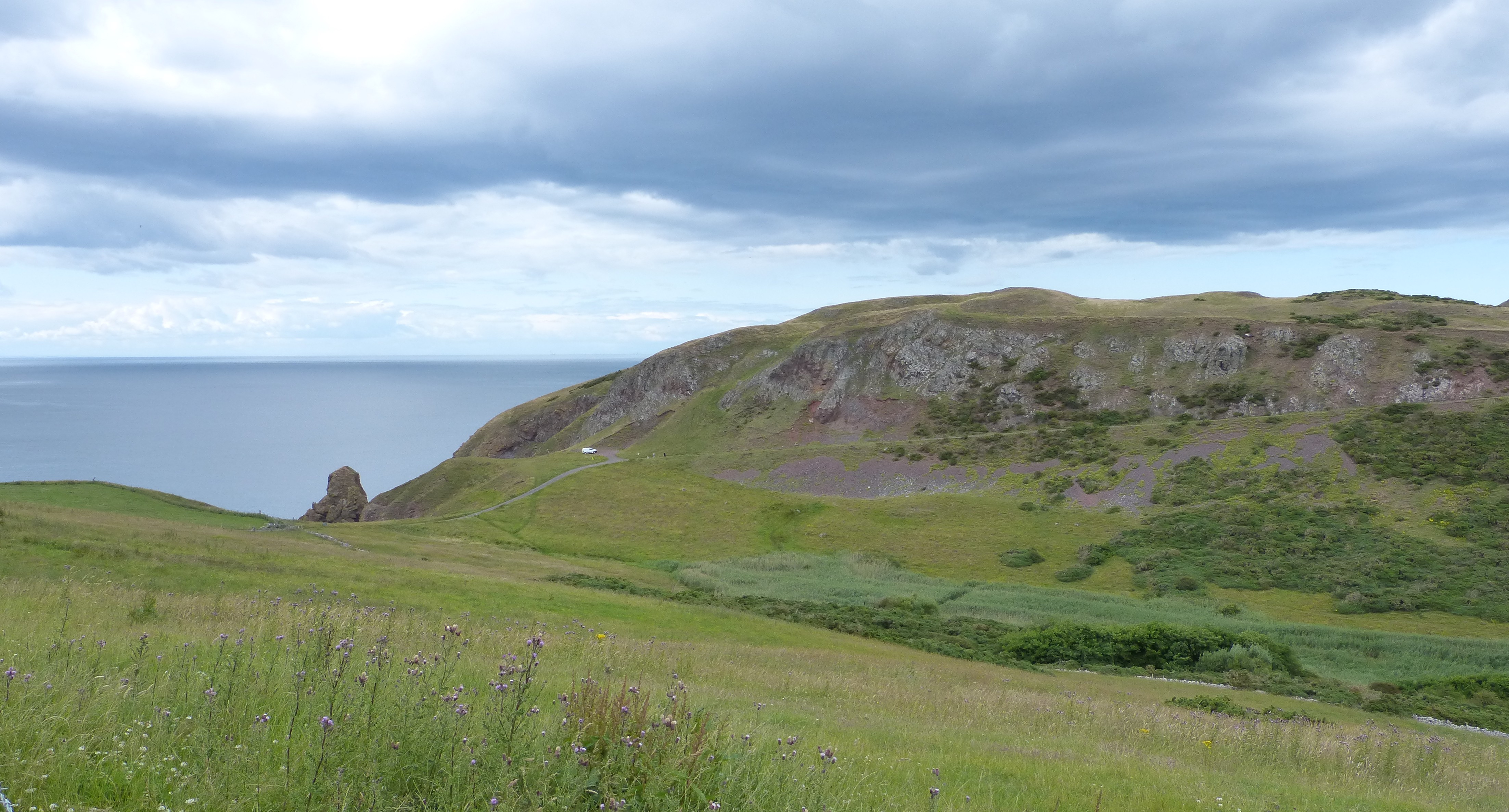
The north-west corner of St Abb’s Head is seen in this view, taken from NT 90935 68768 looking across the valley that follows the St Abb’s Head Fault which reaches the sea at Pettico Wick, close to the stack on the left of the image. The extensive crags are andesitic lavas dipping at about 30° to the south-east. July 2023
Alison Tymon